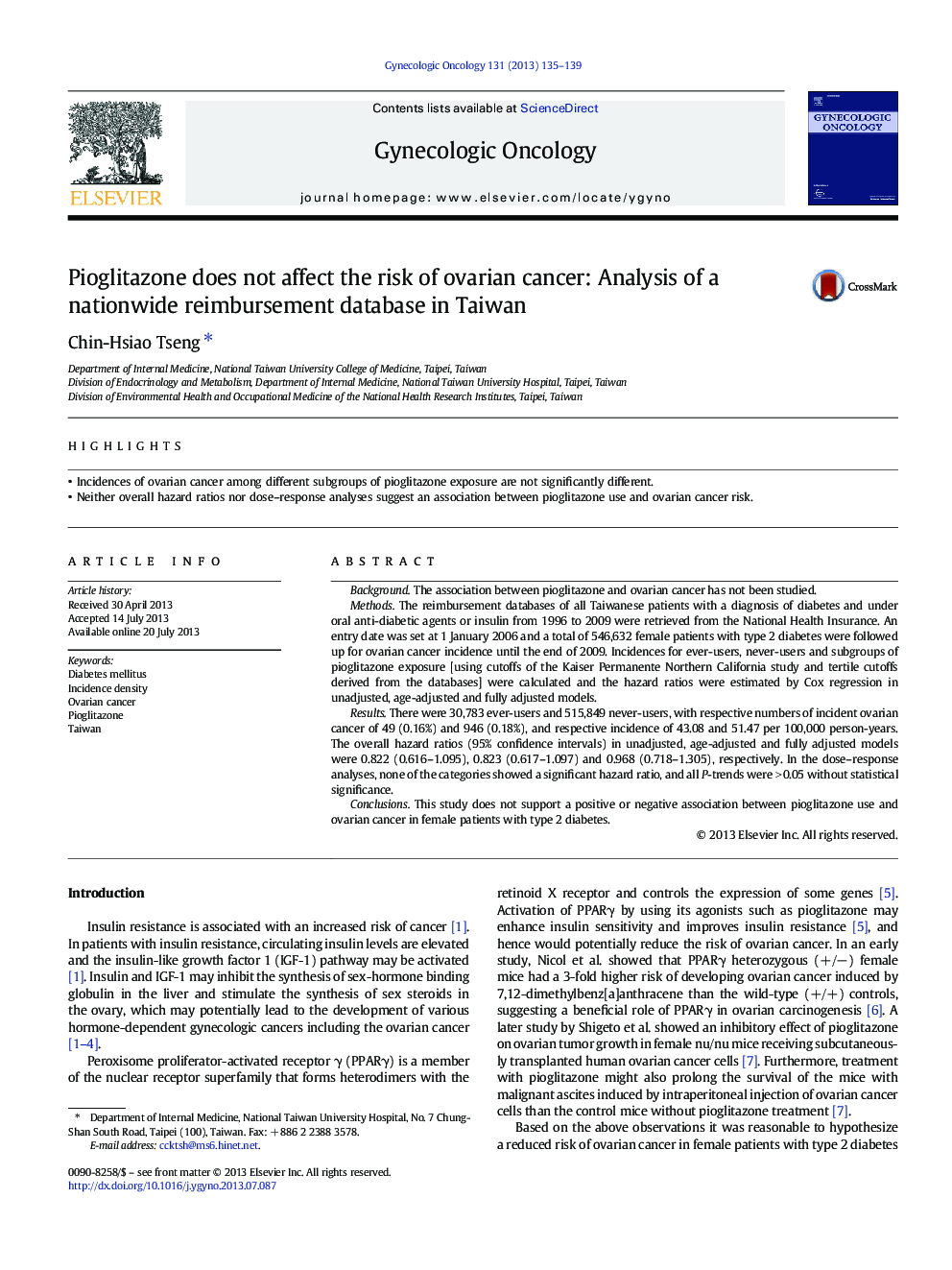| Article ID | Journal | Published Year | Pages | File Type |
|---|---|---|---|---|
| 6185245 | Gynecologic Oncology | 2013 | 5 Pages |
â¢Incidences of ovarian cancer among different subgroups of pioglitazone exposure are not significantly different.â¢Neither overall hazard ratios nor dose-response analyses suggest an association between pioglitazone use and ovarian cancer risk.
BackgroundThe association between pioglitazone and ovarian cancer has not been studied.MethodsThe reimbursement databases of all Taiwanese patients with a diagnosis of diabetes and under oral anti-diabetic agents or insulin from 1996 to 2009 were retrieved from the National Health Insurance. An entry date was set at 1 January 2006 and a total of 546,632 female patients with type 2 diabetes were followed up for ovarian cancer incidence until the end of 2009. Incidences for ever-users, never-users and subgroups of pioglitazone exposure [using cutoffs of the Kaiser Permanente Northern California study and tertile cutoffs derived from the databases] were calculated and the hazard ratios were estimated by Cox regression in unadjusted, age-adjusted and fully adjusted models.ResultsThere were 30,783 ever-users and 515,849 never-users, with respective numbers of incident ovarian cancer of 49 (0.16%) and 946 (0.18%), and respective incidence of 43.08 and 51.47 per 100,000 person-years. The overall hazard ratios (95% confidence intervals) in unadjusted, age-adjusted and fully adjusted models were 0.822 (0.616-1.095), 0.823 (0.617-1.097) and 0.968 (0.718-1.305), respectively. In the dose-response analyses, none of the categories showed a significant hazard ratio, and all P-trends were >Â 0.05 without statistical significance.ConclusionsThis study does not support a positive or negative association between pioglitazone use and ovarian cancer in female patients with type 2 diabetes.
